
Spider-Man and His Amazing Friends is a 1981–83 American animated television series produced by Marvel Productions, considered to be a crossover series connected to the 1981 Spider-Man series. The show stars already-established Marvel Comics characters Spider-Man and Iceman, along with an original character, Firestar. As a trio called the Spider-Friends, they fight against various villains of the Marvel Universe.
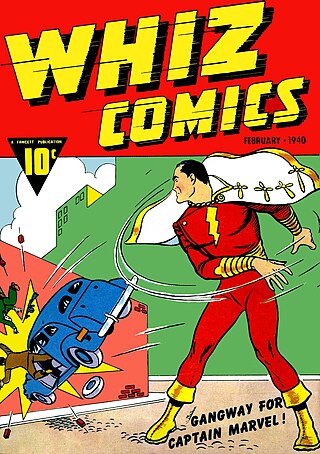
A superhero or superheroine is a stock character who typically possesses superpowers or abilities beyond those of ordinary people, is frequently costumed concealing their identity, and fits the role of the hero; typically using their powers to help the world become a better place, or dedicating themselves to protecting the public and fighting crime. Superhero fiction is the genre of fiction that is centered on such characters, especially, since the 1930s, in American comic books, as well as in Japanese media.

The Justice League, or Justice League of America (JLA), is a group of superheroes appearing in American comic books published by DC Comics. The team first appeared in The Brave and the Bold #28. The team was conceived by writer Gardner Fox as a revival of the Justice Society of America, a similar team from DC Comics from the 1940s which had been pulled out of print due to a decline in sales.

Schoolhouse Rock! is an American interstitial programming series of animated musical educational short films which aired during the Saturday morning children's programming block on the U.S. television network ABC. The themes covered included grammar, science, economics, history, mathematics, and civics. The series' original run lasted from 1973 to 1985; it was later revived from 1993 to 1996. Additional episodes were produced in 2009 for direct-to-video release.

Super Friends is an American animated television series about a team of superheroes which ran from 1973 to 1985 on ABC as part of its Saturday-morning cartoon lineup. It was produced by Hanna-Barbera and was based on the Justice League of America and associated comic book characters published by DC Comics.
DePatie–Freleng Enterprises was an American animation studio founded by former Warner Bros. Cartoons employees in May 1963, before dissolving in 1981. Based in Burbank, California, DFE produced animation for film and television.

Metrication is the process of introducing the International System of Units, also known as SI units or the metric system, to replace a jurisdiction's traditional measuring units. U.S. customary units have been defined in terms of metric units since the 19th century, and the SI has been the "preferred system of weights and measures for United States trade and commerce" since 1975 according to United States law. However, conversion was not mandatory and many industries chose not to convert, and U.S. customary units remain in common use in many industries as well as in governmental use. There is government policy and metric (SI) program to implement and assist with metrication, however there is major social resistance for further metrication.
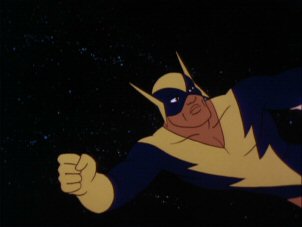
Black Vulcan is an African-American superhero on the animated series Super Friends and Harvey Birdman, Attorney at Law by Hanna-Barbera, voiced in the former by Buster Jones and the latter by Phil LaMarr.
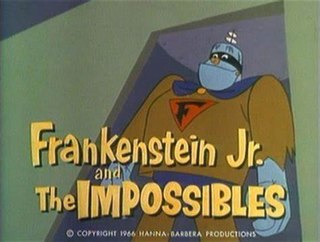
Frankenstein Jr. and The Impossibles is an American animated television series produced by Hanna-Barbera Productions. It premiered on September 10, 1966 on CBS, and ran for two seasons on Saturday mornings.

Sunbow Entertainment was an American animation studio and distributor, founded on June 23, 1980, and owned until May 4, 1998, by Griffin-Bacal Advertising in New York City and in the United States. Griffin-Bacal's first animations were animated commercials for Hasbro's G.I. Joe toy line. The success of the animated commercials led partners Tom Griffin and Joe Bacal to form the company. Due to their close working relationship with Hasbro, Sunbow came to be recognized as the toy giant's unofficial television arm.
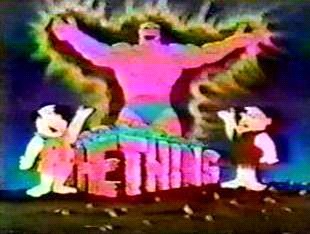
Fred and Barney Meet the Thing is an American animated package show and a spin-off of The Flintstones produced by Hanna-Barbera which aired on NBC from September 8, 1979, to December 1, 1979.
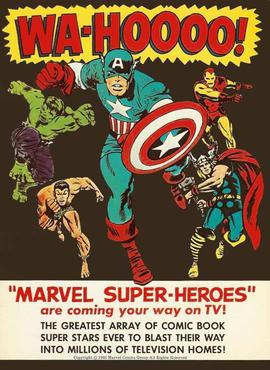
The Marvel Super Heroes is an American animated television series starring five comic book superheroes from Marvel Comics. The first TV series based on Marvel characters, it debuted in syndication on U.S. television in 1966.

The New Adventures of Superman is a series of six-minute animated Superman adventures produced by Filmation that were broadcast Saturday mornings on CBS from September 10, 1966, to September 5, 1970. The 68 segments appeared as part of three different programs during that time, packaged with similar shorts featuring The Adventures of Superboy and other DC Comics superheroes.
Spider-Woman is an animated television series, based on the Marvel Comics character Spider-Woman. The series was produced by DePatie–Freleng Enterprises and Marvel Comics Animation, and aired from September 22, 1979 to January 5, 1980 on ABC. It was DePatie–Freleng's final series before its reincorporation as Marvel Productions.

Superhero fiction is a subgenre of speculative fiction examining the adventures, personalities and ethics of costumed crime fighters known as superheroes, who often possess superhuman powers and battle similarly powered criminals known as supervillains. The genre primarily falls between hard fantasy and soft science fiction in the spectrum of scientific realism. It is most commonly associated with American comic books, though it has expanded into other media through adaptations and original works.
DC Nation Shorts is an animated series of shorts featuring characters from DC Comics from a variety of different titles that aired on Cartoon Network on Saturdays at 10/9c.

Marvel Rising is an American media franchise and shared universe produced by Marvel Animation. The animated media are based on characters that appear in American comic books published by Marvel Comics. The franchise includes a made-for-television film, television specials, short films, and comic books. The franchise focuses on the Secret Warriors, a diverse team of teenage superheroes, as they join forces together.
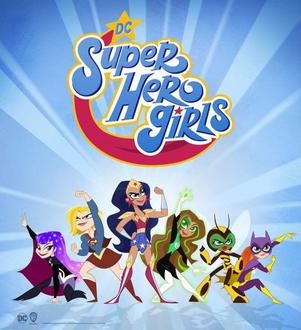
DC Super Hero Girls is an American animated superhero television series created and developed by Lauren Faust and produced by Warner Bros. Animation and DC Entertainment for Cartoon Network. Based on the web series and franchise of the same name, the series premiered on March 8, 2019, with a one-hour special.

Spidey and His Amazing Friends is an animated television series produced by Marvel Studios Animation and Atomic Cartoons that premiered on Disney Junior on August 6, 2021. The show features young versions of the Marvel characters.
















